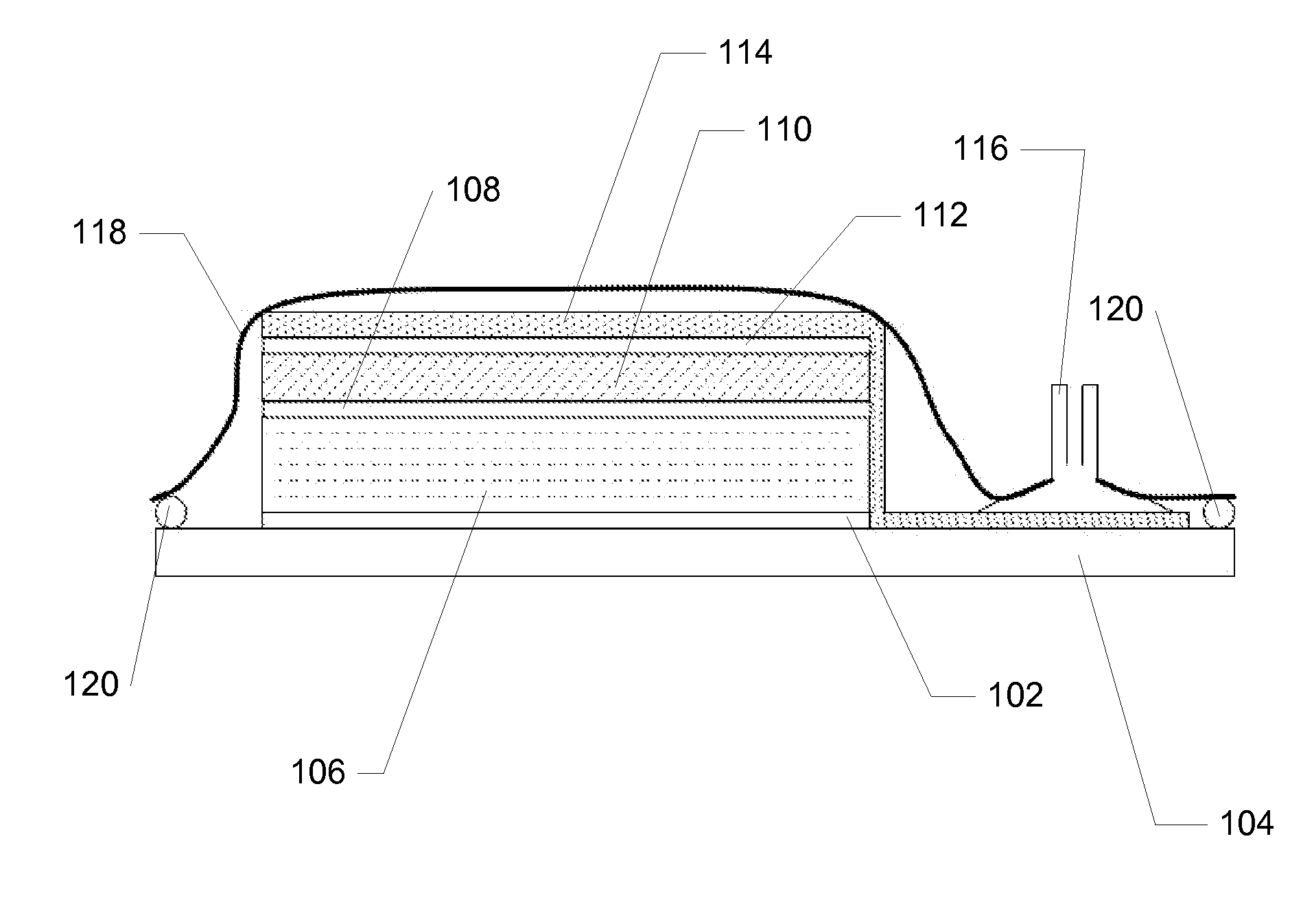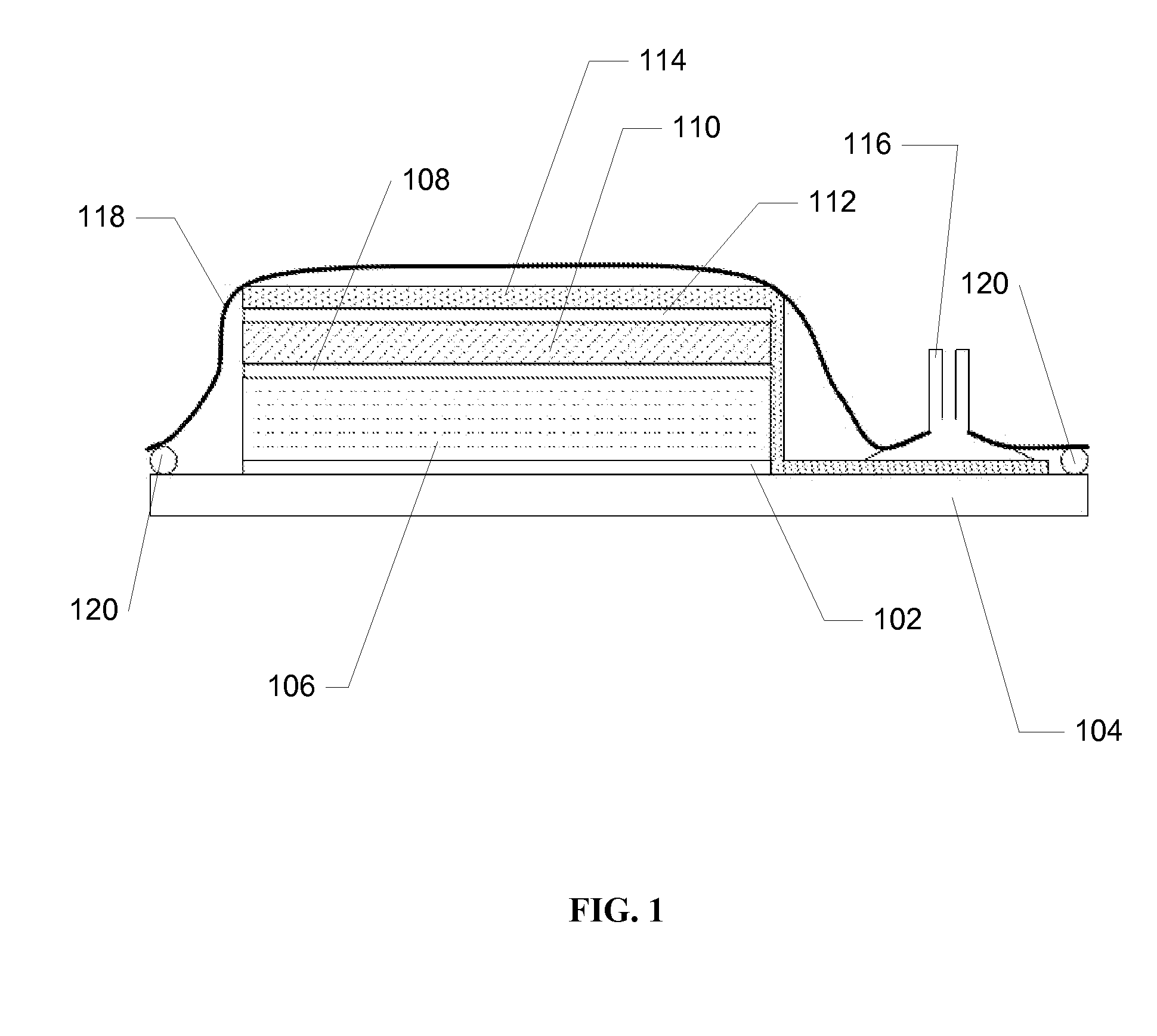Articles Comprising Protective Sheets and Related Methods
a technology of protective sheets and protective sheets, applied in the field of protective sheets, can solve the problems of inability to impart some or all of the desired performance properties, gel coats are often too thin or too hard to provide substantial levels of abrasion resistance, and gel coats are typically not capable of providing significant impact resistance, etc., to achieve the effect of eliminating adhesive bonding materials, facilitating the formation of new and improved articles, and eliminating process steps
- Summary
- Abstract
- Description
- Claims
- Application Information
AI Technical Summary
Benefits of technology
Problems solved by technology
Method used
Image
Examples
example 1
[0102]An extensible polyurethane-based protective sheet was prepared such that the sheet comprised a carrier layer having a thickness of 150 microns, a topcoat layer having a thickness of 18 microns, and an adhesive layer having a thickness of 60 microns. The adhesive layer was adhered to the opposite side of the carrier layer from the topcoat layer. A standard release liner was positioned exterior to the adhesive layer, but was removed prior to testing.
[0103]To prepare the sheet, first a 98# polyethylene-coated kraft paper with silicone coated on one side was used as a release liner onto which the adhesive layer was formed. The adhesive layer was formed from an adhesive composition prepared by charging a closed vessel with initial components as follows: 20% by weight 2-ethyl hexyl acrylate, 5% by weight methyl acrylate, 1% by weight acrylic acid, 37% by weight ethyl acetate, 7% by weight isopropyl alcohol, 26.1% by weight toluene, and 3.75% by weight n-propanol. The weight percenta...
examples 2a-2c
[0111]For each example, a 150-μm (0.006-inch) thick film of a polycaprolactone-based, aliphatic thermoplastic polyurethane film (available from Argotec, Inc. of Greenfield, Mass.) is positioned as an outer layer on top of four stacked layers of prepreg carbon fiber fabric. The resulting 5-layer structure is then placed into a heated platen press for a period of about 45 minutes, at a temperature of about 120° C. (250° F.) and an applied pressure of about 0.34 MPa (50 psi). During this step, the resin composition within the prepreg is cured. The sample is then removed from the platen press and allowed to cool.
[0112]Any suitable epoxy resin composition can be used in this process. A number of commercial suppliers and published documents provide formulation guidelines for epoxy resin systems (e.g., “EPON® Resin Chemistry” published by Resolution Performance Products). Most Bisphenol-A and Bisphenol-F epoxy resins are expected to be suitable for use as the epoxy resin according to these...
example 3
[0122]Several layers of carbon fiber prepreg were prepared by hand-coating sufficient epoxy thermoset resin into a 12K woven carbon fiber fabric. The epoxy resin formulation was prepared based on 100 phr of EPON 863 (a Bisphenol-F epoxy resin available from Resolution Performance Products of Houston, Tex.), 22.4 phr of Ancamine 2441 (a modified polyamine curing agent available from Air Products and Chemicals, Inc. of Allentown, Pa.), and 5 phr of CAB-O-SIL TS-720 (a treated fumed silica available from Cabot Corporation of Billerica, Mass.). A protective sheet was directly bonded to the resulting epoxy-carbon fiber article using in-mold vacuum bag processing. The protective sheet consisted of a 150-μm (0.006-inch) thick film of a polycaprolactone-based, aliphatic thermoplastic polyurethane film (available from Argotec, Inc. of Greenfield, Mass. under the trade designation ARGOTEC 49510-6).
[0123]A flat aluminum plate was used as a vacuum bag mold surface. Prior to configuring a vacuum...
PUM
| Property | Measurement | Unit |
|---|---|---|
| Dimensionless property | aaaaa | aaaaa |
| Dimensionless property | aaaaa | aaaaa |
| Elongation at break | aaaaa | aaaaa |
Abstract
Description
Claims
Application Information
 Login to View More
Login to View More - R&D
- Intellectual Property
- Life Sciences
- Materials
- Tech Scout
- Unparalleled Data Quality
- Higher Quality Content
- 60% Fewer Hallucinations
Browse by: Latest US Patents, China's latest patents, Technical Efficacy Thesaurus, Application Domain, Technology Topic, Popular Technical Reports.
© 2025 PatSnap. All rights reserved.Legal|Privacy policy|Modern Slavery Act Transparency Statement|Sitemap|About US| Contact US: help@patsnap.com


